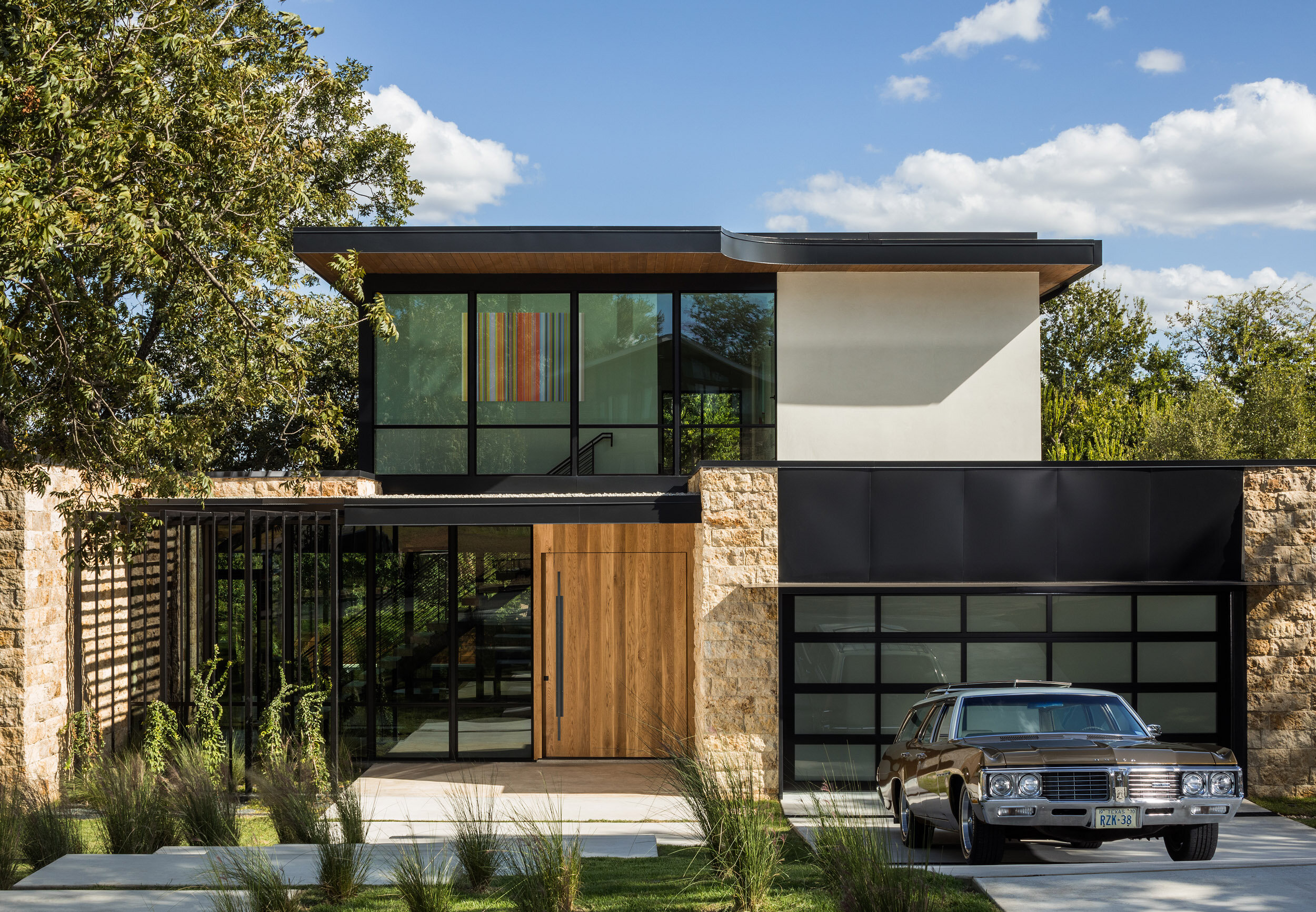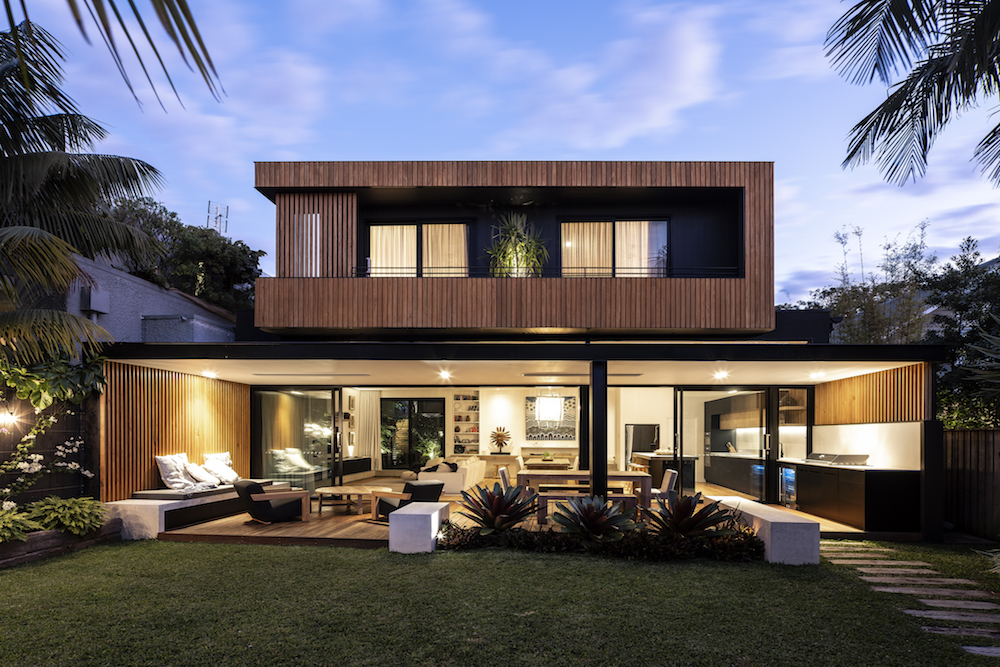Innovative Residential Interior Architect to Create Functional and Stylish Interiors
Innovative Residential Interior Architect to Create Functional and Stylish Interiors
Blog Article
Leading Trends in Residential Architecture You Should Know Regarding
As household style remains to develop, several compelling fads are forming the method we develop and occupy our home. Secret growths such as lasting building techniques, the integration of smart home modern technology, and the surge of modular homes emphasize a considerable change towards both capability and ecological obligation. In addition, principles like open strategy living and biophilic design are redefining our interaction with space and nature. Comprehending these trends not just notifies layout options yet likewise exposes broader implications for lifestyle and community - residential house architect. What might these advancements mean for the future of domestic living?
Sustainable Structure Practices
An increasing variety of property projects are accepting sustainable structure techniques, driven by a growing understanding of environmental influence and energy effectiveness. This change is defined by the combination of environment-friendly products, energy-efficient layouts, and innovative building and construction methods. Builders and homeowners are progressively focusing on the use of eco-friendly resources, such as bamboo and recycled steels, which not just minimize the carbon footprint but additionally enhance the sturdiness and visual charm of residential properties.
Incorporating energy-efficient systems is another essential element of lasting structure - residential house architect. Attributes such as high-performance insulation, energy-efficient windows, and photovoltaic panels are ending up being criterion in brand-new household designs. These elements not only add to reduced energy usage however additionally provide substantial lasting savings for homeowners
Additionally, the design of lasting homes often stresses natural light and ventilation, decreasing the reliance on artificial illumination and environment control systems. Landscape design methods, such as xeriscaping, further promote sustainability by reducing water use.
As the need for sustainable living solutions proceeds to increase, the household architecture sector is positioned to introduce and adapt, ensuring that future homes are not just eco accountable yet likewise comfortable and practical for their residents. - residential house architect
Smart Home Technology
Smart home modern technology is transforming the means homeowners connect with their living areas, boosting convenience, safety, and energy management. This innovative method integrates numerous gadgets and systems, enabling individuals to regulate their homes from another location or with automated processes. Central to this pattern is the use of wise gadgets such as thermostats, lights, security cameras, and appliances, all attached through the Web of Points (IoT)
One of the most enticing attributes of clever home modern technology is the capability to tailor settings for optimum power effectiveness. Home owners can keep track of energy use and readjust heating, lighting, and cooling based on their routines, dramatically lowering energy expenses. Moreover, sophisticated safety and security systems geared up with smart locks and security cams provide comfort, allowing remote monitoring and signals to possible security violations.
Combination with voice-activated assistants boosts individual experience, allowing homeowners to manage devices with basic voice commands. As modern technology remains to evolve, the potential for wise home systems to boost lifestyle expands, making them an important factor to consider in modern domestic architecture. Ultimately, clever home innovation is not just a fad but a fundamental shift towards extra smart living atmospheres.
Open Concept Living
Open up principle living has emerged as a defining attribute in modern residential style, identified by the removal of standard obstacles in between spaces. This design philosophy advertises fluidity and connection within the home, permitting for a smooth change in between locations such as the kitchen area, dining, and living areas. By removing walls and dividings, open idea formats develop a feeling of spaciousness, cultivating an inviting environment that enhances social communication.

Additionally, this method to domestic layout straightens with minimalism, concentrating on practical simplicity and visual comprehensibility. House owners value the adaptability of these layouts, which can be quickly adjusted to show individual style via furniture arrangement and design. As open principle living continues to get grip, it continues to be a testimony to progressing family characteristics and the need for homes that improve connection and convenience.
Biophilic Design
Biophilic style has actually come to be significantly significant in residential design, emphasizing the innate connection between people and nature. This layout viewpoint looks for to incorporate natural aspects into living spaces, therefore promoting a sense of health and boosting the high quality of life for passengers. By including functions such as natural light, plant life, and natural products, biophilic design promotes a harmonious relationship in between interior environments and the environment.
Key components of biophilic design consist of huge home windows that give unhampered sights of outside landscapes, living wall surfaces that introduce plant right into interiors, and open layout that urge air movement and all-natural light penetration. Water functions, both inside and outside the home, serve to create relaxing ambiences and improve sensory experiences.
In addition, using sustainable materials not just sustains ecological stewardship but likewise adds to healthier indoor air top quality. As recommended you read recognition of ecological problems increases, house owners are progressively prioritizing designs that reflect their link to nature. Essentially, biophilic style not only elevates visual charm yet likewise addresses psychological and psychological requirements, making it an important trend in contemporary household style.
Modular and Prefab Residences

In addition, prefab and modular homes are created with sustainability in mind. Many suppliers use energy-efficient systems and eco-friendly products, such as photovoltaic panels and advanced insulation strategies, adding to reduced power intake and lower utility costs for home owners. The flexibility of layout choices permits customization, providing to varied visual preferences and functional requirements.
As the need for budget-friendly real estate remains to rise, modular and prefab homes present a viable remedy, dealing with both financial and environmental difficulties. Neighborhoods are significantly identifying the capacity of these structures, incorporating them into rural and city settings. Overall, the fad toward modular and prefab homes symbolizes a shift towards a lot more sustainable, efficient, and versatile living settings, making them a pivotal facet of contemporary residential style.
Final Thought
Lasting building practices and smart home technologies enhance efficiency and convenience, while open concept living and biophilic design foster important source social interaction and a link to nature. The increase of modular and prefab homes supplies personalized and budget-friendly remedies, reflecting a broader change towards practical and accountable living.
Key developments such as sustainable building methods, the assimilation of clever home modern technology, and the rise of modular homes emphasize a significant change towards both performance and ecological obligation.The increase of modular and prefab homes has actually changed the property architecture landscape, providing innovative services for efficient and lasting living.In addition, modular and prefab homes are made with sustainability in mind. In general, the fad towards modular and prefab homes signifies a shift toward much more lasting, efficient, and versatile living environments, making them a critical element of contemporary household architecture.
Sustainable structure methods and smart home modern technologies improve efficiency and comfort, while open principle living and biophilic design foster social interaction and a link to nature.
Report this page